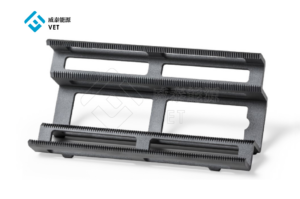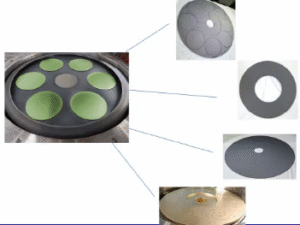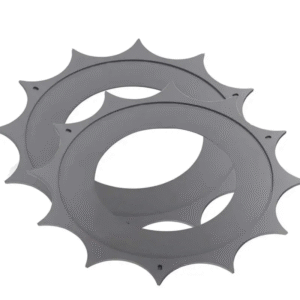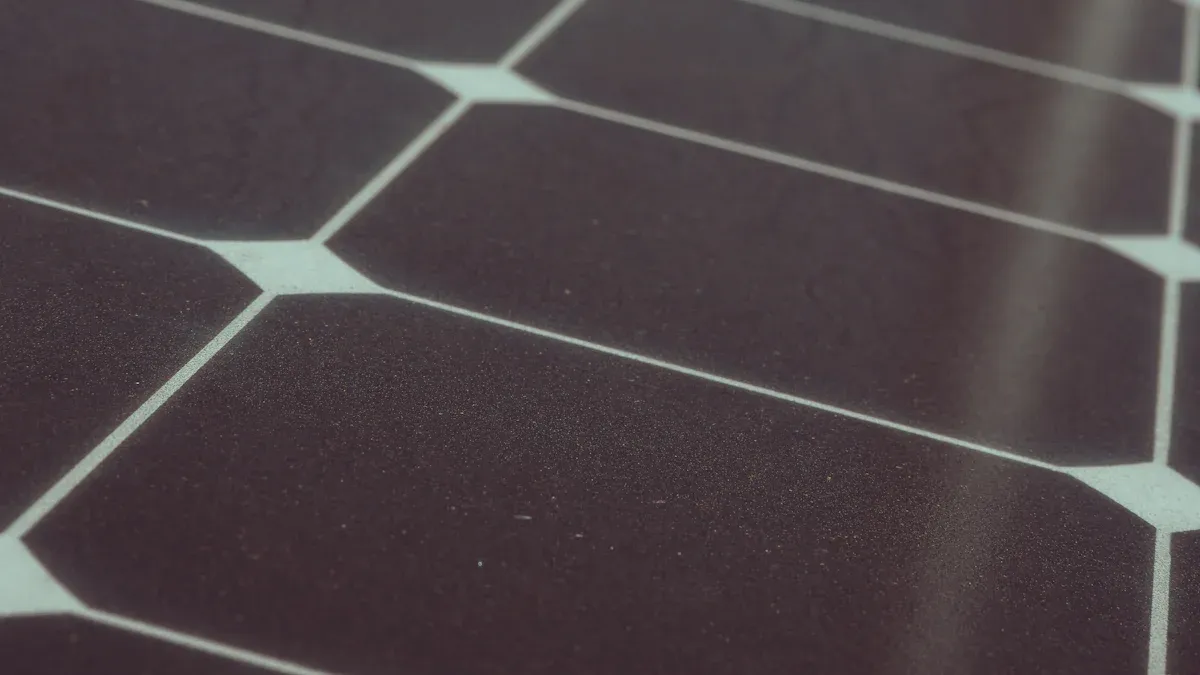
CVD TAC Coating represents a revolutionary advancement in thermal management for photovoltaic cells. With its outstanding thermal conductivity and stability, it effectively dissipates heat and minimizes temperature fluctuations. TAC COATING significantly reduces material degradation caused by heat stress, offering a superior alternative to traditional methods. Innovations such as CVD SIC COATING and SIC COATING further enhance the reliability and performance of photovoltaic systems, ensuring they operate efficiently even under extreme conditions.
Key Takeaways
- CVD TAC Coating helps control heat in solar cells. It boosts energy use and stops them from getting too hot.
- The coating makes solar panels last longer by handling temperature changes and stopping wear and tear.
- CVD TAC Coating works well in tough conditions. It makes solar systems stronger and saves money.
What is CVD TAC Coating?
Definition and Key Properties
CVD TAC Coating, or chemically vapor-deposited titanium aluminum carbon coating, is a cutting-edge material designed to optimize thermal management in advanced technologies. It exhibits exceptional thermal conductivity, enabling efficient heat transfer across surfaces. Its high thermal stability ensures reliable performance under fluctuating temperatures, making it ideal for applications requiring durability and precision. Additionally, the coating resists chemical degradation, maintaining its structural integrity even in harsh environments. These properties position CVD TAC Coating as a transformative solution for industries like renewable energy and electronics.
Chemical Vapor Deposition Process
The Chemical Vapor Deposition (CVD) process is a sophisticated technique used to create CVD TAC Coating. This method involves depositing thin layers of titanium, aluminum, and carbon onto a substrate by introducing gaseous precursors into a controlled environment. The process operates under specific temperature and pressure conditions to ensure uniform coating formation.
| Temperature (°C) | Pressure (Torr) | H2 Flow (sccm) | H2S Flow (sccm) |
|---|---|---|---|
| 600 | 4.5 | 10 | Varied |
| 600 | 4.5 | 10 | 10 |
The table above highlights verified metrics for the CVD process, showcasing the precision required to achieve optimal coating quality. Ningbo VET Energy Technology Co., Ltd leverages this advanced technique to produce coatings tailored for photovoltaic applications, ensuring superior performance and reliability.
Applications in Photovoltaic Cells
CVD TAC Coating plays a pivotal role in enhancing the efficiency and durability of photovoltaic cells. By facilitating rapid heat dissipation, it prevents overheating and minimizes the risk of hot spots, which can compromise cell performance. Its robust thermal stability extends the operational lifespan of solar panels, reducing maintenance costs and improving long-term energy output. Furthermore, the coating’s resistance to environmental stressors, such as UV radiation and chemical exposure, ensures consistent performance in diverse climates. Ningbo VET Energy Technology Co., Ltd integrates CVD TAC Coating into its solar energy systems, driving advancements in renewable energy technology.
How CVD TAC Coating Enhances Thermal Management
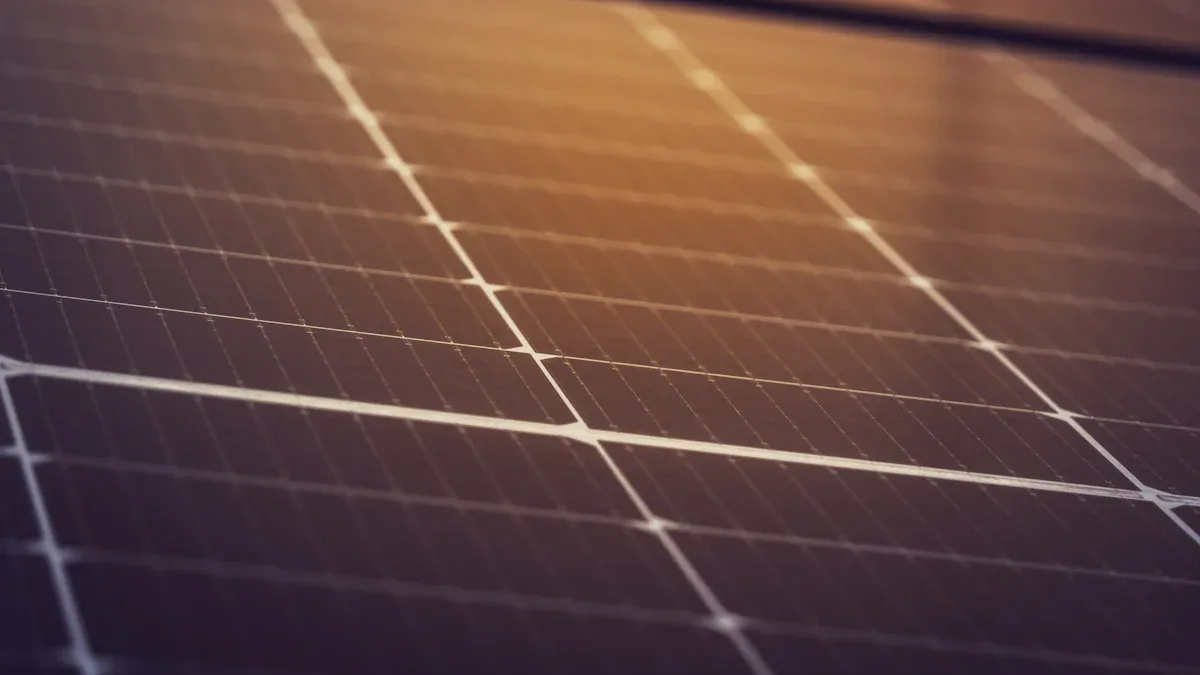
Mechanisms of Heat Dissipation
Efficient heat dissipation is critical for maintaining the performance of photovoltaic cells. CVD TAC Coating facilitates this process by leveraging its exceptional thermal conductivity. The coating allows heat to transfer rapidly across the surface of solar cells, preventing localized temperature build-up. This uniform heat distribution minimizes thermal stress, which can otherwise lead to material fatigue.
The unique composition of CVD TAC Coating, combining titanium, aluminum, and carbon, creates a highly conductive layer. This layer acts as a thermal bridge, channeling excess heat away from sensitive components. By optimizing heat flow, the coating ensures that photovoltaic cells operate at their peak efficiency, even under intense sunlight. Ningbo VET Energy Technology Co., Ltd utilizes this advanced material to enhance the thermal performance of its solar energy systems, setting a new standard in renewable energy technology.
Prevention of Hot Spots
Hot spots are a common issue in photovoltaic cells, often caused by uneven heat distribution. These localized areas of high temperature can degrade materials, reduce energy output, and shorten the lifespan of solar panels. CVD TAC Coating addresses this challenge by promoting uniform heat dissipation across the entire cell surface.
The coating’s high thermal stability ensures that temperature variations are minimized, even in fluctuating environmental conditions. This stability prevents the formation of hot spots, safeguarding the structural integrity of photovoltaic cells. Additionally, the coating’s resistance to environmental stressors, such as UV radiation and chemical exposure, further enhances its ability to prevent localized overheating. By integrating CVD TAC Coating into their products, Ningbo VET Energy Technology Co., Ltd ensures reliable and efficient solar panel performance.
Tip: Preventing hot spots not only improves energy efficiency but also reduces maintenance costs, making solar energy systems more sustainable and cost-effective.
Improved Thermal Stability and Longevity
Thermal stability is a key factor in the durability of photovoltaic cells. CVD TAC Coating excels in this area, offering unmatched resistance to temperature fluctuations. Its robust composition allows it to maintain structural integrity under extreme heat, ensuring long-term reliability.
The coating also protects photovoltaic cells from thermal cycling, a process where repeated heating and cooling can cause material fatigue. By mitigating this effect, CVD TAC Coating extends the operational lifespan of solar panels. This durability translates to lower replacement costs and a higher return on investment for solar energy systems.
Ningbo VET Energy Technology Co., Ltd has harnessed the benefits of CVD TAC Coating to develop solar panels that perform consistently in harsh environments. Whether exposed to intense sunlight or rapid temperature changes, these panels deliver reliable energy output, demonstrating the transformative potential of this advanced coating technology.
Benefits for Photovoltaic Cells

Increased Energy Efficiency
CVD TAC Coating significantly enhances the energy efficiency of photovoltaic cells by optimizing thermal management. Its exceptional thermal conductivity ensures rapid heat dissipation, preventing energy losses caused by overheating. This efficient heat transfer allows solar cells to maintain optimal operating temperatures, maximizing their energy conversion rates.
Moreover, the coating minimizes the formation of hot spots, which can disrupt energy flow and reduce overall output. By ensuring uniform temperature distribution, it enables photovoltaic systems to generate consistent and reliable energy. Ningbo VET Energy Technology Co., Ltd integrates this advanced coating into its solar panels, delivering cutting-edge solutions for renewable energy applications.
Extended Operational Lifespan
The durability of photovoltaic cells is directly linked to their ability to withstand thermal stress. CVD TAC Coating extends the lifespan of these cells by offering superior resistance to temperature fluctuations and material fatigue.
- CVD TAC Coating can increase the lifespan of graphite components by 30-50%.
- This durability reduces maintenance costs and enhances the long-term value of solar panels.
- Its robust composition protects against thermal cycling, ensuring reliable performance over time.
By incorporating this advanced coating, Ningbo VET Energy Technology Co., Ltd provides solar panels that require less frequent replacement, offering a cost-effective solution for sustainable energy systems.
Enhanced Performance in Harsh Environments
Photovoltaic cells often face challenging environmental conditions, including intense sunlight, UV radiation, and chemical exposure. CVD TAC Coating ensures reliable performance in these harsh environments. Its high thermal stability and chemical resistance protect solar panels from degradation, maintaining their efficiency and structural integrity.
Note: Solar panels equipped with CVD TAC Coating perform consistently across diverse climates, from arid deserts to humid coastal regions. This adaptability makes them an ideal choice for global renewable energy projects.
By leveraging this innovative coating, Ningbo VET Energy Technology Co., Ltd delivers solar energy systems that excel in durability and performance, even under extreme conditions.
Why It’s Revolutionary
Comparison to Traditional Coatings
CVD TAC Coating surpasses traditional coatings in efficiency, durability, and environmental resilience. Unlike conventional materials, it offers superior thermal conductivity and stability, ensuring consistent performance under extreme conditions. A comparative analysis highlights its advantages:
| Parameter | Coated Cells | Uncoated Cells |
|---|---|---|
| Enhanced Cell Efficiency | 4.8% | N/A |
| Improved Durability | 5.9 Years | N/A |
| Reduced Environmental Impact | 38.87% | N/A |
| Cost Effectiveness | 21.13% | N/A |
| Long-term Efficiency Retention | 95% after 10 years | N/A |
This data underscores the transformative impact of CVD TAC Coating on photovoltaic cells, making it a superior choice for modern solar energy systems.
Unique Contributions to Solar Technology
CVD TAC Coating introduces groundbreaking advancements in solar technology. Its ability to prevent hot spots and enhance thermal stability ensures optimal energy output. By extending the lifespan of photovoltaic cells, it reduces maintenance costs and promotes sustainability.
The coating also supports the development of biodegradable and bio-based solar panels. These innovations increase power output by up to 10% while reducing the carbon footprint by 30%. Ningbo VET Energy Technology Co., Ltd leverages this technology to create eco-friendly solar solutions, setting a benchmark for the renewable energy industry.
Future Implications for Renewable Energy
The adoption of CVD TAC Coating signals a promising future for renewable energy. Market trends indicate a projected growth rate of 28.7% for TaC coatings, with applications spanning solar PV manufacturing, wind energy, and electric vehicles.
| Application Area | Benefits |
|---|---|
| Solar PV Manufacturing | TaC-coated graphite components improve efficiency and reduce production costs for solar cells. |
| Wind Energy | Coatings reduce maintenance costs for turbine blades exposed to harsh environments. |
| Electric Vehicles | Essential for producing high-performance semiconductors in EV power electronics. |
The Asia-Pacific region, particularly China and Japan, is expected to lead this growth due to advancements in semiconductor fabrication. As demand for eco-friendly materials rises, CVD TAC Coating will play a pivotal role in minimizing waste and enhancing the sustainability of renewable energy technologies.
CVD TAC Coating marks a groundbreaking advancement in the photovoltaic industry. Its unmatched thermal management capabilities improve energy efficiency, durability, and performance. This innovation supports the global shift toward sustainable energy solutions. Ningbo VET Energy Technology Co., Ltd leads this transformation by integrating cutting-edge coatings into its solar energy systems, setting new industry standards.
FAQ
What makes CVD TAC Coating superior to traditional coatings?
CVD TAC Coating offers unmatched thermal conductivity, stability, and durability. It prevents hot spots, enhances energy efficiency, and extends the lifespan of photovoltaic cells.
Can CVD TAC Coating withstand extreme environmental conditions?
Yes, its high thermal stability and chemical resistance ensure reliable performance in harsh environments, including intense sunlight, UV radiation, and chemical exposure.
How does Ningbo VET Energy Technology Co., Ltd utilize CVD TAC Coating?
The company integrates this advanced coating into solar panels, improving thermal management, energy efficiency, and durability for cutting-edge renewable energy solutions.
Note: For more details on CVD TAC Coating, contact Ningbo VET Energy Technology Co., Ltd. Their expertise drives innovation in solar energy systems.


